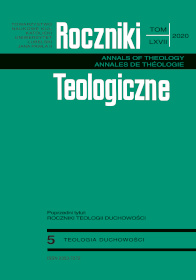Architecture and Liturgical Art as an Antidote to Desacralization. A Study of Artistic Creativity by M.I. Rupnik SI
Abstract
Contemporary architecture and sacred art have lost their original instinct in favor of illegible and ambiguous forms. In this way, sacred art, in a sense, sent the message to be a reality that helps man in contact with God, or, as the theorists of sacred art wanted, a tool that brings God down to earth. These tendencies are being remedied by Fr. Marko I. Rupnik, a Slovenian Jesuit, theologian and iconographer, founder of the Aletti Center – an institute of theology and art, promoting the idea of “the Christian breathing of two lungs”, combining the Eastern and Western traditions, which formed the doctrine of the undivided Church. The effect of Rupnik’s theological thought is liturgical art, which, inscribed in architecture, creates a space for human meeting with God.
References
Florenski P., Filar i podpora prawdy. Próba teodycei prawosławnej w dwunastu listach, Wydawnictwo KR, Warszawa 2009.
Krysiewicz Z., Sztuka sakralna uciemiężona, „Teofil” 2000, nr 3, s. 5-11.
Sobór Watykański II, Konstytucja o liturgii świętej „Sacrosanctum Concilium”, w: Sobór Watykański II, Konstytucje. Dekrety. Deklaracje. Tekst polski – nowe tłumaczenie, Pallottinum, Poznań 2002, s. 48-78.
Popera K., I. Cichonska, K. Snopek, Architektura VII dnia, Wydawnictwo Bęc Zmiana, Warszawa 2016.
Rupnik M., Il simbolo dà accesso al mistero del mondo, w: T. Spidlik, M.I. Rupnik, Una conoscenza integrale. La vita del simbolo, Lipa Edizioni, Roma 2010, s. 193-270.
Spidlik T., Katechezy o Kościele, Wydawnictwo Ojców Franciszkanów „Bratni Zew”, Kraków 2003.
Copyright (c) 2020 Roczniki Teologiczne

This work is licensed under a Creative Commons Attribution-NonCommercial-NoDerivatives 4.0 International License.





